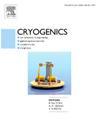Helium isotope separation technology: A comprehensive review and perspective
IF 2.1
3区 工程技术
Q3 PHYSICS, APPLIED
引用次数: 0
Abstract
Helium is a light, rare gas element whose isotopes have very important applications in the fields of defense and security, energy technology, and frontier technology. Helium has two stable isotopes, helium-3 (3He) and helium-4 (4He), with the natural abundance of 4He being much higher than that of 3He. 4He is widely used in cryogenic refrigeration, Aerospace wind tunnel testing and Industrial leak detection, whereas 3He plays a key role in neutron detectors, deuterium-3He fusion, and cryogenic refrigeration. Currently, the only industrial source of 3He is the radioactive decay of tritium in nuclear reactors. However, the increasing demand for 3He in recent years has led to the exploration of a number of other potential avenues of obtaining it. In this paper, we summarize the various techniques for helium isotope separations to date, including cryogenic superleak, heat flush, cryogenic distillation, cryogenic adsorption, and a number of other less commonly used separations. We provide a detailed discussion and comparison of these methods. Finally, the paper summarizes and analyzes the methods used for measuring helium isotope concentrations to date.
氦同位素分离技术综述与展望
氦是一种轻、稀有的气体元素,其同位素在国防安全、能源技术和前沿技术等领域有着非常重要的应用。氦有氦-3 (3He)和氦-4 (4He)两种稳定同位素,其中4He的自然丰度远高于3He。氦广泛应用于低温制冷、航空航天风洞测试和工业泄漏检测,而氦在中子探测器、氘-3He聚变和低温制冷中起着关键作用。目前,3He的唯一工业来源是核反应堆中氚的放射性衰变。然而,近年来对3He的需求不断增加,导致了对其他一些潜在途径的探索。本文总结了迄今为止氦同位素分离的各种技术,包括低温超漏、热冲洗、低温蒸馏、低温吸附和一些其他不常用的分离技术。我们对这些方法进行了详细的讨论和比较。最后,对迄今为止氦同位素浓度测量方法进行了总结和分析。
本文章由计算机程序翻译,如有差异,请以英文原文为准。
求助全文
约1分钟内获得全文
求助全文
来源期刊

Cryogenics
物理-热力学
CiteScore
3.80
自引率
9.50%
发文量
0
审稿时长
2.1 months
期刊介绍:
Cryogenics is the world''s leading journal focusing on all aspects of cryoengineering and cryogenics. Papers published in Cryogenics cover a wide variety of subjects in low temperature engineering and research. Among the areas covered are:
- Applications of superconductivity: magnets, electronics, devices
- Superconductors and their properties
- Properties of materials: metals, alloys, composites, polymers, insulations
- New applications of cryogenic technology to processes, devices, machinery
- Refrigeration and liquefaction technology
- Thermodynamics
- Fluid properties and fluid mechanics
- Heat transfer
- Thermometry and measurement science
- Cryogenics in medicine
- Cryoelectronics
 求助内容:
求助内容: 应助结果提醒方式:
应助结果提醒方式:


